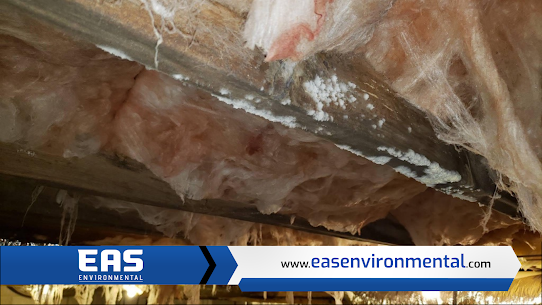
If you have mold in your crawl space, getting rid of it can be a hazardous and time-consuming process. Do-it-yourself approaches aren't always effective, and they sometimes pose new dangers to people's health. Hiring a professional service is the most secure, efficient, and effective way to get rid of mold in your crawl space. In this article, we'll go over why it's best to hire a pro for crawl space mold remediation.
Introduction to crawl space mold and the potential dangers
The lower levels of a house or building, known as the "crawl space," are particularly vulnerable to the effects of moisture buildup and dampness. Since mold can flourish in such an environment, it poses a serious threat to their health and can trigger symptoms in people with respiratory conditions, allergies, or asthma. It is important to treat mold properly whether you have a small infestation or a large one because mold spores in the air can travel through ventilation systems and spread to other parts of your home.
The longer mold is allowed to grow in your crawl space, the greater the risk it will cause damage to you and your home. If mold is present, it is best to have a professional inspect the area, as do-it-yourself solutions may not be effective enough to eradicate the problem. Professionals in the field of crawl space remediation know how to safely and effectively eliminate mold problems, leaving behind no lingering spores.
How to Determine if a Professional is Needed for Crawl Space Mold Remediation
Mold remediation in a crawl space is a job best left to the pros. Small infestations can be handled by the homeowner with the help of some basic do-it-yourself methods, such as using protective clothing and adequate ventilation.
Professional remediators can evaluate the extent of an infestation and develop a strategy to deal with it. Knowing the materials and surface area needed for the job, as well as the potential risks associated with health hazards due to airborne spores, is an important first step. They can safely remove mold without risking further contamination because of the specialized equipment they use. If you want to rest easy knowing the problem has been resolved correctly, hiring a professional is the way to go.
The Benefits of Professional Crawl Space Mold Remediation
There are many benefits to hiring a professional mold removal service that can't be achieved by doing it yourself. Concerning security first: Certified mold remediators are trained to remove mold from your home or business without putting anyone's health at risk. To further guarantee that no spores are left behind after treatment, they have access to specialized tools like HEPA-filtered vacuums and air quality monitors.
Expert mold remediators know how to quickly and accurately pinpoint the source of the problem thanks to their familiarity with the various species of mold and their unique characteristics. With this level of knowledge, outbreaks can be contained quickly, decreasing the likelihood of a widespread problem later on. In addition, homeowners can save thousands of dollars in repairs that might be needed if an outbreak is allowed to spread unchecked by taking a preventative approach rather than a reactive one.
Advantages of Customized Approaches to Crawl Space Mold Removal
When it comes to removing mold from a crawl space, homeowners often find the best results by taking a more tailored approach. The size, shape, and location of a home's crawl space, as well as the type and severity of any infestations, are all factors that can inform the development of an effective treatment strategy. This ensures that the most effective and efficient treatments are used to get rid of the issue as soon as possible without breaking the bank.
Taking into account any vulnerable areas inside the home that could make people more susceptible to airborne spores, a customized approach can also help mitigate the potential health risks associated with mold growth. places like bathrooms and bedrooms that tend to have higher than average amounts of moisture and humidity and thus may be conducive to mold growth. Infested areas can be quickly pinpointed with the help of professionals, who can then devise an approach to eliminating the problem in a way that is both safe and effective.
Safety Considerations When Removing Crawl Space Mold
When dealing with mold in a crawl space, safety must be a top priority. Because of the ease with which spores can be spread without professional intervention, the damage can quickly multiply. Certified mold removal specialists are versed in the dangers posed by various molds and the best methods for eradicating and preventing their return to a building.
Ventilation is another critical safety factor. Crawl spaces and other enclosed areas where moisture can accumulate quickly are prime locations for mold growth. As a result, increasing ventilation and decreasing humidity must be central goals of any cleanup work. Either add more insulation to the walls or install a dehumidifier to reduce the amount of moisture that can be trapped there. Only trained remediation specialists should attempt these procedures, as doing so could potentially spread contamination to other areas of the house.
Techniques Used in Professional Crawl Space Mold Removal
Remediators use a variety of cutting-edge methods for mold removal from crawl spaces. Among these is the employment of industrial-strength vacuums, which can remove debris even from inaccessible locations. The use of chemical treatments to contain or eliminate any lingering spores is also possible.
Any drywall, flooring, insulation, or wooden panels that have been contaminated must be removed and replaced as part of the remediation process. Finally, professionals must take great care to avoid spreading any spores while entering the affected area. Companies specializing in remediation have the necessary equipment to complete these tasks securely and cautiously.
Conclusion
Because of the high level of expertise and security offered by professionals, mold remediation from a crawl space is strongly advised. They can access mold infestations in hard-to-reach areas and contain them without risking further contamination in surrounding areas. On top of that, they have dealt with every conceivable mold problem, so they can move quickly and accurately to resolve even the largest mold emergencies.
In addition, expert services can offer all-encompassing long-term solutions by locating the origins of water intrusion, like plumbing leaks or flooding, and recommending repairs to halt the spread of mold spores. The stress of dealing with mold can be alleviated when homeowners hire a professional to do the job.
FAQs about The Benefits of Professional Crawl Space Mold Removal
Contact EAS Environmental Today!
EAS Environmental will do everything we can to ensure your experience with us is excellent.
Request A FREE Estimate
Request a Free Estimate Form
Checkout Recent Post




Got a Question? We’re Here to Help.
You can arrange an appointment or make an enquiry by phone or email, orget in touch to us via our contact form.

